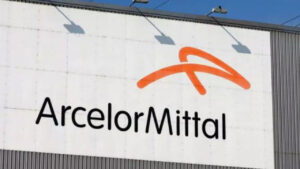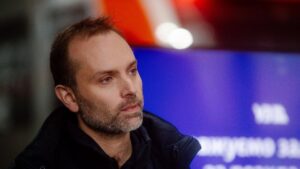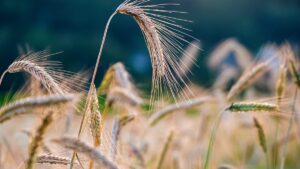
The National Anti-Corruption Bureau of Ukraine (NABU) and the Specialized Anti-Corruption Prosecutor’s Office (SAP) are conducting a large-scale operation to expose corruption in the energy sector, according to a report on NABU’s Telegram channel on Monday morning.
“15 months of work and 1,000 hours of audio recordings. The activities of a high-level criminal organization have been documented. Its members have built a large-scale corruption scheme to influence strategic enterprises in the public sector, in particular JSC ”NAEK “Energoatom.” Details to follow,” the message says.
A message with identical content was published on the SAP’s Telegram channel.
Earlier, the media and MP Yaroslav Zheleznyak (Golos faction) reported on searches at the home of Timur Mindich, co-owner of the Kvartal 95 studio, Minister of Justice Herman Galushchenko, and at NAEK Energoatom JSC.
Zheleznyak said that the statement on corruption at Energoatom was filed by him and his colleagues. According to the MP, “Mindyich, Herman, Energoatom — all are in our investigation and in one subsequent statement to NABU.”
Later, he wrote in a telegram that “this is not all.”

ArcelorMittal Beryslav (Beryslav, Kherson region), one of ArcelorMittal’s Ukrainian subsidiaries, earned UAH 14.554 million in net profit, while 2023 ended with a net loss of UAH 17.851 million.
According to the annual report, last year the company increased its net income by 86% compared to the previous year, to UAH 111.167 million.
Undistributed losses at the end of 2024 amounted to UAH 107.337 million.
According to the report, last year ArcelorMittal Beryslav produced 376,793 thousand tons of limestone and sold 353,287 thousand tons. Balance sheet reserves of minerals at the end of the year amounted to 3,975.2 thousand tons.
The average number of full-time employees is 52, and the wage fund in 2024 is UAH 11.333 million.
As reported, with the start of the full-scale invasion, the town of Arkhangelskoye was occupied for almost seven months. On October 3, 2022, the Vysokopilsk community, which included the town of Arkhangelsk, was liberated by the Armed Forces of Ukraine. During the occupation of the Kherson region, due to constant shelling, mining, and hostilities, the production facilities of ArcelorMittal Beryslav were destroyed.
ArcelorMittal Beryslav is located in the town of Arkhangelsk (Kherson region), 60 km from Kryvyi Rih, and extracts limestone for metallurgical production and the construction industry.
Based on its performance in the pre-war year of 2021, ArcelorMittal Beryslav reduced its net profit by 2.3 times compared to 2020, to UAH 12.685 million.
ArcelorMittal Kryvyi Rih is the largest producer of rolled steel in Ukraine. It specializes in the production of long products, in particular, rebar and wire rod.
ArcelorMittal owns Ukraine’s largest mining and metallurgical complex, ArcelorMittal Kryvyi Rih, and a number of small companies, including ArcelorMittal Beryslav.
ArcelorMittal Beryslav (formerly Beryslav Building Materials Plant, established in 1994 by transforming the state-owned enterprise of the same name).
ArcelorMittal acquired the Beryslav Building Materials Plant in July 2010.
According to the NDU for the second quarter of 2025, ArcelorMittal Global Holding (Luxembourg) owned 74.45% of the shares of ArcelorMittal Beryslav, and ArcelorMittal Netherlands B.V. (Netherlands) owned 24.81%.
The authorized capital of ArcelorMittal Beryslav JSC is UAH 1.063 million, with a share par value of UAH 0.25.

“To ensure sustainable operations in 2026, Ukrzaliznytsia (UZ) must cover a liquidity deficit of around UAH 48.8 billion, excluding the repayment of Eurobonds, whose debt is to be restructured,” said CEO Oleksandr Pertsovsky on Friday during a presentation on passenger transport financing and the model for launching the UZ-3000 program.
“We have chosen the most balanced model to cover this deficit: part of it will be provided by our internal optimization, part by tariff decisions, and the third part by state support for passenger transport. There are no other realistic ways to get through these years in the context of the war,” he emphasized.
According to him, the amount of state co-financing for passenger transport will amount to up to UAH 13 billion in 2025 and will increase to more than UAH 16 billion in 2026.
According to Pertsovsky, operating losses in passenger transport total UAH 24 billion per year (UAH 13 billion for long-distance transport and UAH 11 billion for local transport), and while it was previously possible to offset these losses at the expense of profits in freight transport, this is impossible during the war.
According to the presentation, the expected loss in the passenger transport segment will increase from UAH 18.1 billion last year to UAH 18.6 billion this year, UAH 21.9 billion next year, and UAH 24.4 billion in 2027.
Suburban transport is expected to lose UAH 10.9 billion next year, domestic transport UAH 13.4 billion, and only international passenger transport will be profitable, with UAH 2.4 billion.
At the same time, UZ forecasts that profits from freight transport will decline from UAH 20.4 billion last year to UAH 3.2 billion this year, with a loss of UAH 0.6 billion next year, increasing to UAH 4.8 billion in 2027.
The reasons for this change in the profitability of freight transport are a reduction in volume (coal – by 4 million tons, grain – by 9 million tons after the artificial peak in 2024) and a reduction in transport distances, resulting in a loss of UAH 14.5 billion in freight revenue, as well as rising costs (personnel, electricity, financial costs) with frozen tariffs, which means an additional UAH 2.7 billion in expenses.
According to the presentation, the projected net loss for next year is UAH 28.64 billion.
In addition, the company expects UAH 25.4 billion in critical restructuring costs with depreciation of UAH 15.9 billion, UAH 6.4 billion in interest payments on Eurobonds, and UAH 4.2 billion in repayments of EBRD and EIB loans, which together result in a liquidity deficit of UAH 48 billion, according to the presentation.
As part of its own optimization, UZ has proposed an economic effect of almost UAH 17 billion in 2026, of which UAH 6.7 billion has already been taken into account in the draft financial plan. A further UAH 10.2 billion is to be achieved by reducing administrative costs, transferring non-core assets, cooperating with the freight market, and increasing its own revenues.
According to the presentation, the optimization measures include the elimination of 69 of the most unprofitable suburban routes (up to 5,000 per day), the indexation of unregulated elements (commissions, services), and flexible dynamic pricing for individual segments, which are expected to generate a total of UAH 6.9 billion.
In addition, there are plans to optimize the workforce by 8,300 employees, merge regional railways, and optimize up to 1,200 km (less than 5%) of the network with no or minimal traffic (1-2 suburban pairs).
Energy efficiency measures also include operating during intervals with the lowest fares, doubling rental income (+UAH 100 million), the sale of surplus and non-core assets, the sale of scrap metal (over 370,000 tons, which is more than UZ has sold in the last 5 years and secures the company a 28% share of the scrap market), and reducing repairs to passenger cars, regional trains, and infrastructure.
Ukrzaliznytsia points out that the financing model for passenger transport is in line with the European practice of public service obligation (PSO), whereby the state covers the difference between economically justified costs and tariffs.
Earlier this week, Serhiy Leshchenko, deputy chairman of the UZ supervisory board, told the Verkhovna Rada that the company’s net loss for the first nine months of this year amounted to UAH 7.195 billion.
According to him, UZ proposes to index freight tariffs by 27.5% from January 1 next year and by another 11% from July 1.
In January-June 2025, UZ’s export traffic decreased by 13.5% to 38.7 million tons, domestic traffic decreased by 11.7% to 35.5 million tons, while import traffic increased by 5.4% to 5.3 million tons.
Passenger traffic increased by 1.2% to 13.52 million in the first half of 2025.
In 2024, UZ increased its revenue by 11.1% to UAH 102.87 billion, but reported a net loss of UAH 2.71 billion, compared to a net profit of UAH 5.04 billion in 2023.

The Ministry of Economy, Environment, and Agriculture forecasts a 6% increase in harvest in 2025 compared to last year due to an increase in grain crops, said Minister of Economy, Environment, and Agriculture Oleksiy Sobolev.
“Overall, this year’s harvest is expected to be slightly higher — about 6% higher than last year. The growth will be primarily due to grain crops — approximately 59 million tons are expected, compared to 56 million tons last year,” he said in an interview with Forbes Ukraine.
The oilseed harvest will remain at last year’s level. We expect a harvest of about 79 million tons of grain and oilseeds combined.
The minister noted that farmers sowed 4.8 million tons of winter crops this year (74% of the forecast) and harvested 37.6 million tons of grain (73% of all sown areas).
He emphasized that in 2025, the harvest in Ukraine will be collected later. This is reflected in the skewed GDP growth in the second half of the year, as part of the money that went into the first half of the year will go into the second half due to weather conditions.

In Q2 2025, average housing prices in Hungary rose by 17.9% year-on-year and 5.1% quarter-on-quarter according to the aggregate index of the National Bank of Hungary. In Budapest, the increase was 23.1% year-on-year and 6.3% quarter-on-quarter, in cities outside the capital – 18.7% year-on-year and 5.9% quarter-on-quarter, in rural areas – 10.7% year-on-year and 2.8% quarter-on-quarter, according to the latest issue of the MNB House Price Index for Q2.
According to Eurostat, in Q2 2025, the aggregate housing price index in the EU rose by 5.4% y/y and 1.6% q/q, indicating that Hungary is outperforming the European average. At the same time, the number of housing transactions in Hungary fell by 5.7%, indicating rising prices amid declining activity.
In Q1 2025, the MNB recorded double-digit price growth both nationally and in the capital, against the backdrop of a revival in mortgage lending and a number of subsidized programs.
The acceleration of prices in the second quarter in the capital and major cities, accompanied by a decline in transactions, points to a market where demand is mainly sustained by improvements in real household incomes and supportive measures, as well as a shift in supply from short-term rentals to long-term formats amid increasing regulation, especially in Budapest.
The baseline scenario for Q4 2025 is a slowdown in growth to 3-4% q-o-q nationwide and 4-5% q-o-q in Budapest amid seasonality and partial profit-taking. A more moderate trajectory is expected for 2026: 6–9% y-o-y nationwide and 8–11% y-o-y in the capital, provided that support programs and stable rates are maintained. Risks of a slowdown include a possible tightening of mortgage conditions and a slowdown in real incomes; risks of acceleration include the expansion of subsidized mortgages and additional restrictions on short-term rentals in tourist areas. The assessment is based on the dynamics of the MNB index, Eurostat statistics on transactions, and reports from the regulator on income support policy.